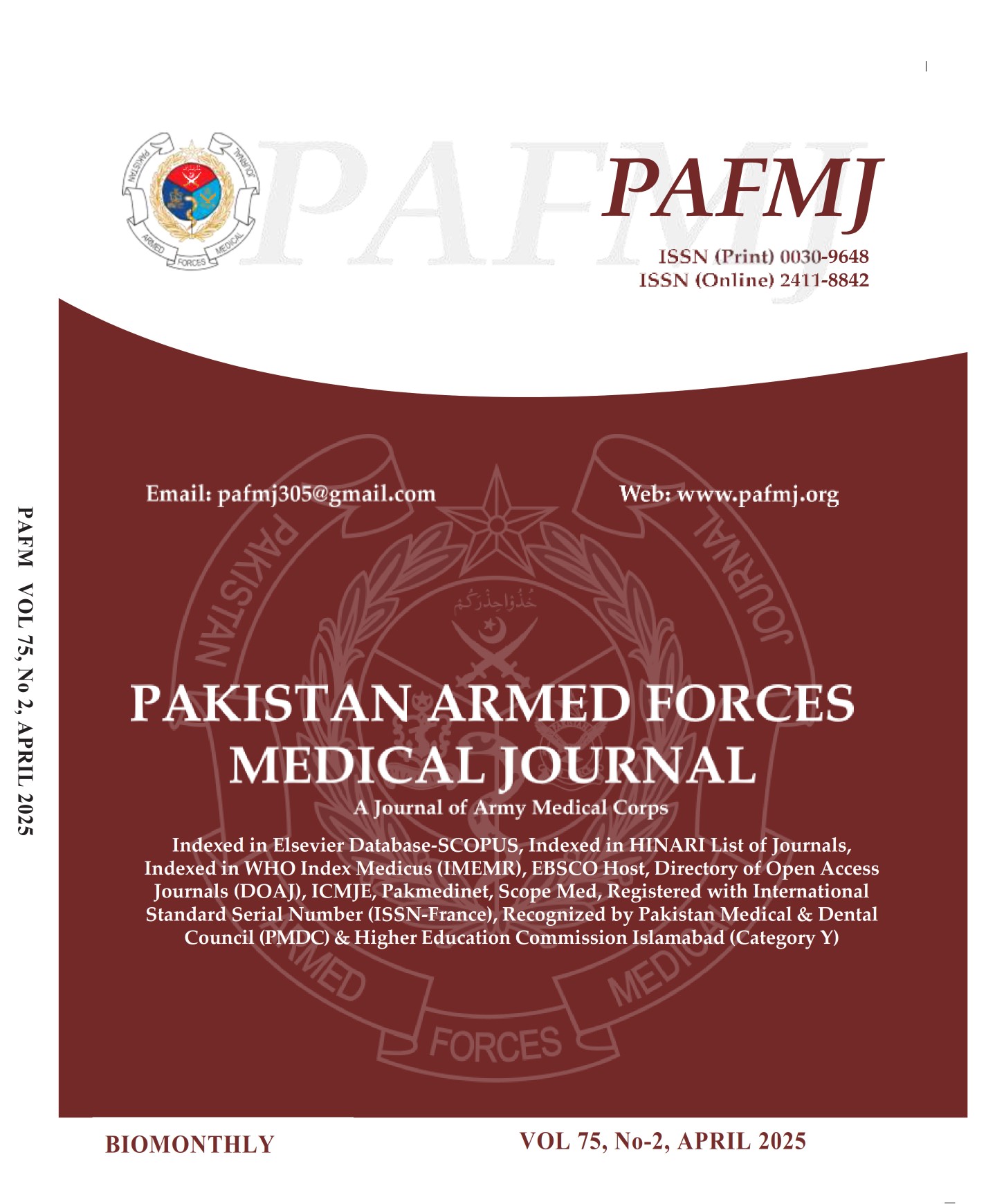Vanishing White Matter Disease: A Case Report and Review of Literature
DOI:
https://doi.org/10.51253/pafmj.v75i2.7991Keywords:
Childhood Ataxia with Central Hypomyelination (CACH), Fluid-Attenuated Inversion Recovery (FLAIR), Hypomyelination, LeukoencephalopathiesAbstract
Vanishing white matter disease is an autosomal recessive hereditary condition of brain. It may have variable phenotypic presentations but is more frequently encountered in younger age group. It is characterized by progressive encephalopathy and episodic neurological decline with predominant feature of cerebellar ataxia. Initial symptoms are preceded by a history of minor trauma, infection or stress. We present here a classic case of vanishing white matter disease diagnosed on Magnetic Resonance Imaging, documented in a four-year-old girl who presented with gait disturbance and progressive neurological deficits following a fall from bike.
Downloads
References
Leegwater PA, Vermeulen G, Könst AA, Naidu S, Mulders J, Visser A, et al. Lemmers RJ. Subunits of the translation initiation factor eIF2B are mutant in leukoencephalopathy with vanishing white matter. Nat Genet 2001; 29(4): 383-388.
Van Der Knaap MS, Leegwater PA, Könst AA, Visser A, Naidu S, Oudejans CB, et al. Mutations in each of the five subunits of translation initiation factor eIF2B can cause leukoencephalopathy with vanishing white matter. Ann Neurol 2002; 51(2): 264-270. https://doi.org/10.1002/ana.10112
Van der Lei HD, Van Berkel CG, Van Wieringen WN, Brenner C, Feigenbaum A, Mercimek-Mahmutoglu S, et al. Genotype–phenotype correlation in vanishing white matter disease. Neurology 2010; 75(17): 1555-1559.
https://doi.org/10.1212/WNL.0b013e3181f962ae
Güngör G, Güngör O, Çakmaklı S, Maraş H, İnce H, Yeşil G, et al. Vanishing white matter disease with different faces. Childs Nerv Syst 2020; 36: 353-361.
https://doi.org/10.1007/s00381-019-04334-6
Senol U, Haspolat S, Karaali K. MR imaging of vanishing white matter. Am J Roentgenol 2000; 175(3): 826-828.
https://doi.org/10.2214/ajr.175.3.1750826
Jouvent E, Alili N, Hervé D, Chabriat H. Vanishing white matter hyperintensities in CADASIL: a case report with insight into disease mechanisms. J Alzheimers Dis 2020; 78(3): 907-910.
https://doi.org/10.3233/JAD-201086
Terumitsu‐Tsujita M, Kitaura H, Miura I, Kiyama Y, Goto F, Muraki Y, et al. Glial pathology in a novel spontaneous mutant mouse of the Eif2b5 gene: a vanishing white matter disease model. J Neurochem 2020; 154(1): 25-40.
https://doi.org/10.1111/jnc.14887
Keefe MD, Soderholm HE, Shih HY, Stevenson TJ, Glaittli KA, Bowles DM, et al. Vanishing white matter disease expression of truncated EIF2B5 activates induced stress response. Elife 2020; 9: e56319. https://doi.org/10.7554/eLife.56319
Navya B, Kondle VK, Uppal K. A case report of leukoencephalopathy with vanishing white matter disease. Int J Contemp Pediatr 2020; 7(1): 1438.
Downloads
Published
Issue
Section
License
Copyright (c) 2025 Sana Ali, Muhammad Sohaib Nadeem, Amir Shabab, Ujala Ali

This work is licensed under a Creative Commons Attribution-NonCommercial 4.0 International License.















